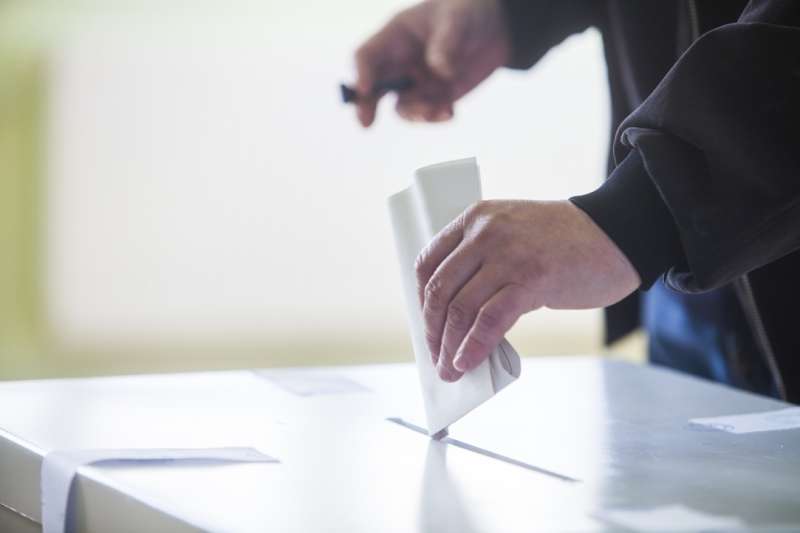Decision-making rules least susceptible to manipulation, according to science

HSE researchers have used computer modeling to demonstrate the varying manipulability of decision-making procedures and to identify those least susceptible to manipulation. Their findings are published in the paper "Manipulability of Majority Relation-based Collective Decision Rules."
In selecting one of several possible options, people can use a range of rules (procedures) for collective decision making. While there are about 30 such rules in total, important decisions such as national elections normally use majority voting systems in which the winner is chosen by a majority.
The relative majority voting rule is the most well-known one, but there are also absolute and qualified majority voting systems. Under the relative majority system, a candidate needs to receive more votes than any of their opponents, but not necessarily more than half of all votes. This system is currently used in the U.K. and Japan, in Congressional elections in the U.S., and in voting for State Duma seats in single-member constituencies in Russia.
The relative majority voting rule leaves plenty of room for manipulation. For example, a voter may prefer option A, but understands that by voting for A, they may increase C's likelihood of winning, C being the least preferable option for them; so instead they modify their ballot by selecting B, which is not their option of choice but better than C. By voting strategically, they hope to defend their opinion better.
"We assume here that the voter initiates such manipulation and shall leave aside the question as to how they arrive at this decision and whether they have been advised by someone else to vote tactically. We are only interested in the possibility of someone seeing the benefit in making an insincere choice," says Daniel Karabekyan, one of the authors of the paper.
A real-life example of large-scale manipulation was the 1993 parliamentary election in Russia, in which the LDPR received 24 percent of seats. Although most experts had predicted with confidence that Gaidar's party would win by a wide margin, many people voted tactically for the LDPR—not necessarily because it was their party of choice, but in order to have opposition politicians represented in parliament.
In fact, political practice and research both reveal that the majority voting rule is not the only one which is manipulable. In the early 1970s, two American authors, Allan Gibbard and Mark Satterthwaite, independently published mathematical proof that any voting rule must be manipulable, as voters can always modify their ballot to defend their opinion better.
Researchers interested in the subject have been working to rank different decision-making rules based on their manipulability. HSE mathematician Fuad Aleskerov was one of the first to publish a paper on the topic in 1999, titled "Degree of Manipulability of Social Choice Procedures," which discussed the use of computer modeling in testing collective decision-making procedures for manipulation. "There are no perfect rules and procedures. Manipulability is present in any procedure, according to a mathematical theorem. However, mathematical computation and modeling can indicate which rules are better than others," Professor Aleskerov explains.
In their paper "Manipulability of Majority Relation-based Collective Decision Rules," HSE researchers Aleskerov and Karabekyan consider 10 majority relation-based procedures and demonstrate that two of them—Uncovered set II and Fishburn's rule—are less manipulable than the others.
Fishburn's rule, proposed by Peter C. Fishburn, allows avoiding cycles, i.e. voting situations in which the winner cannot be determined by a majority vote, because for any option, a better alternative has been chosen: A>B>C>A. This is how the rule works. First, pairwise comparisons of all options are performed to establish the majority preference. For example, with three options, all three pairs, A and B, A and C, and B and C, are voted on to determine which alternative is preferred by a majority in each case. Then upper contours of preferred alternatives are constructed. For example, if a majority of voters prefer A to C and B to C, then A and B are placed in the upper contour relevant to C. Then a dominance relation is constructed based on the contour nesting principle—the fewer alternatives in the upper contour, the better. Undominated options are then finally chosen.
The Uncovered set II rule is similar to Fishburn's rule, but stricter in respect of dominance: In addition to upper contour nesting, it also requires dominance by the majority relation.
According to the researchers, knowing which rules are the least manipulable means that they can be recommended when decisions are made by small groups of voters, such as committees, boards of directors and others. "Due to their complexity, such rules are unlikely to be used in mass elections, but who knows? The study's findings may become highly relevant in the foreseeable future, in particular, as part of computerised decision support systems," said Aleskerov.
More information: Fuad Aleskerov et al, Manipulability of Majority Relation-Based Collective Decision Rules, Intelligent Decision Technologies 2017 (2017). DOI: 10.1007/978-3-319-59421-7_8
Provided by National Research University Higher School of Economics



















